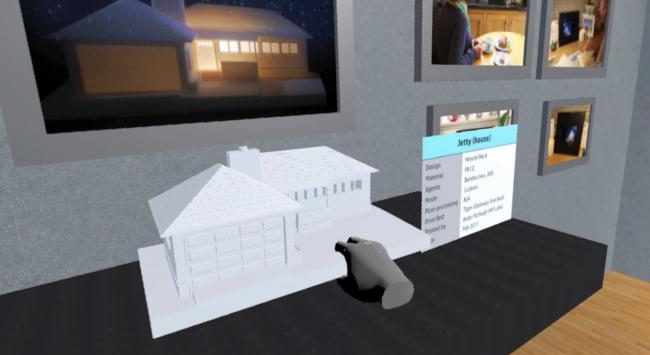HP Labs Explores a New Approach to Immersive Content Creation and Consumption
“Imagine giving students a 360-degree virtual view of a historic location or a place in outer space like Mars” suggests HP Labs researcher Ji Won Jun.
“Then you use 3D models of Mars rovers or you 3D scan artifacts excavated from a site to bring those objects into a virtual reality experience where students can grab and interact with them,” Jun adds. “That experience gets them closer to understanding what it would be like to be there, and it’s different from just reading about it in a book.”
This vision is drawn from a research project Jun has been undertaking in HP’s Immersive Experiences Lab over the past year. Its most recent result is a prototype educational platform that blends the virtual and real worlds to create compelling learning environments – an idea that is generating interest among academics and educators.
The project, Jun says, began as an effort to understand what was most compelling about virtualized experiences.
“I was talking with my HP Labs colleagues about what kind of VR experiences we liked, and I realized that I wasn’t really excited about VR because it felt very overwhelming to me,” she recalls. “It felt very disconnected from my real world.”
In response, Jun decided to try and create a virtual world that did feel comfortable. After discussions with teammates Mary Baker and Eric Faggin, Jun developed a personalized, and now more comfortable, virtual space that featured copies and scans of real world items. Its blending of real and virtual worlds prompted Jun to think about other situations in which that kind of intermixing might have value. She quickly identified education as a promising area of exploration.
“There are a lot of studies indicating that learning in a virtual or augmented reality setting helps students increase their understanding,” Jun notes. “Students who use those tools for learning have been shown, for example, to get higher scores in tests.”
Jun developed her educational platform concept to demonstrate how students and teachers might bring their own projects and learning materials into an immersive virtual space to interact, learn, and teach. It uses the HP Mixed Reality Headset, the HP Z 3D Camera, and parts printed with HP Multi Jet Fusion 3D printers to create a virtual space that is filled with photos, 3D models, and 3D scanned objects.
“I’m imagining a kind of virtual classroom in which students can show off their projects and where teachers can also bring in virtual materials and references for students to interact and engage with – leading, potentially, to deeper understanding of the subject matter,” Jun says.
Jun demoed the platform concept at this fall’s EDUCAUSE educational technology conference, after which several university professors expressed interest in helping develop the concept further.
“A lot of people in higher education would like to use these new technologies,” Jun notes, “but, it requires some 3D modeling and coding skills, so they are interested in using a platform that they don’t have to build from scratch.”
Jun has also used her system to record 360 degree views of team meetings and thinks it might have value as a kind of memory sphere that you can dive back into to capture the full value of an event.
It’s too early know whether this particular platform might have commercial potential, and for Jun immediate productization isn’t the point of her research. A designer by training, she views her efforts primarily as a chance to understand the kinds of experiences that matter to people.
“I’m very interested in presenting people with a novel experience and asking them what they think of it,” she says. “I think we can develop valuable ideas by showing people concepts and prototypes in the virtual space and then using their responses to push our ideas further.”













